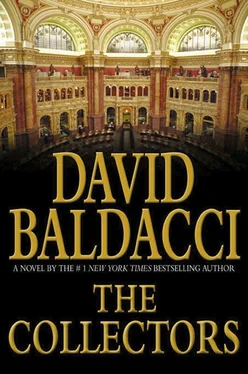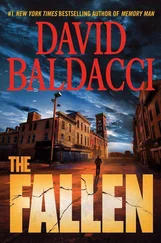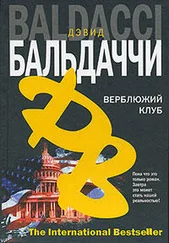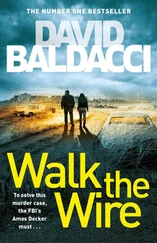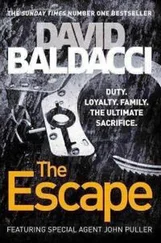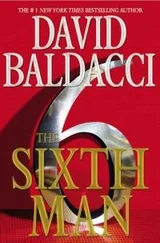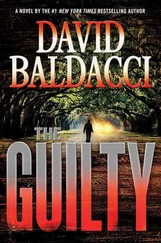After he had finished his reconnoiter, Seagraves parked his rental car at a hotel. Gripping a briefcase, he walked into the bar, had a drink and then took the elevator up as though going to his room. He waited an hour and then took the stairs down. Exiting the building through another door, Seagraves slid into another car he had waiting in an adjacent parking lot. He had something else to do tonight besides contemplating another murder.
He drove to a motel, drawing a key out of his pocket as he exited his car. With ten quick strides he was at the door of a room on the second level overlooking the parking lot. He opened the door but did not turn on the light. He walked quickly to the door connecting to the next room, unlocked it and went through. As he stepped into the second room, Seagraves could sense the other person’s presence but said nothing. He took off his clothes and climbed into bed with her. She was soft, curvy, warm and, most important of all for his purposes, a shift supervisor at NSA.
An hour later, each of them satisfied, he dressed and smoked a cigarette while she showered. He knew that she had taken the same steps he had to avoid being followed, and the NSA had so many employees it simply couldn’t keep track of them all. And she’d never given anyone any reason to show interest in her, which was why he’d recruited her for his operation. And they were both single, so even if the rendezvous were discovered, it would be put down to simple sex between two consenting adults who happened to be federal employees, which, as yet, was not illegal in America.
The water in the shower stopped. He knocked on the bathroom door and opened it. He helped her out of the shower, gave her naked ass a squeeze and dropped another kiss on her.
“I love you,” she said, nuzzling his ear.
“You mean you love the money,” he answered back.
“That too,” she cooed, dropping her hand to his crotch and pressing against him.
“One a night,” he said. “I’m not eighteen anymore.”
She gripped his muscular shoulders. “Could’ve fooled me, baby.”
“Next time,” he said, slapping her butt hard and leaving a red mark.
“Be rough again,” she said, breathing in his ear. “Make me hurt.”
“I don’t know any other way.”
She pushed him against the wall, her damp breasts wetting his shirt, and ripped at his hair as she tried to stick her tongue all the way down his throat. “God, you are so damn sexy,” she moaned.
“That’s what they tell me.”
He tried to pull away but she wouldn’t let go. “The money wire goes out on schedule?” she asked in between jabs of her tongue.
“As soon as I get my cash, you get yours, sweetie.” And she cooed again, and this time let him free after he’d given her butt another hard slap, leaving a mark on the other cheek.
Yes, stupid, it really was all about the money.
While she finished in the bathroom, he walked back into the other room, flicked on a light, grabbed her purse off the nightstand and slid the digital camera out of one of the inner pockets. He thumbed the twenty-gig hard drive out of the slot and used his fingernail to scrape off a small black veneer from the back of the inch-long drive. He stared at the miniature object for a few seconds. Tiny in size, it represented at least $10 million, maybe more, to an eager buyer in the Middle East who did not like America knowing his plans of death and destruction for those who opposed him.
The information on this black gem would balance out the fight, at least for a little while, until NSA figured out that their new surveillance program had been compromised. Then they’d change it, Seagraves would get another call and he, in turn, would make a call. Then a few days later he’d go to another motel, screw the lady again, peel off another veneer and make another eight figures. Repeat business was his staple. They’d continue to do it until NSA started to realize that the mole was somewhere close. Then Seagraves would shut the operation down at NSA, for a while anyway, since bureaucrats tended to have short memories. In the meantime he’d just go after another target. And there were so many.
He used a bit of gum to stick the piece of veneer containing digital details of NSA’s surveillance program behind one of his front teeth. Then he went to the first motel room he’d entered, where another change of clothes hung in the closet. He showered, changed and left, walking along the street for a few blocks, then grabbed a bus, rode it to a rental car shop, slid into another leased ride and drove home.
He spent an hour digging the information out of the tiny device and another hour putting it in proper form for passing on. As a spy Seagraves had long been an enthusiastic student of secret codes and the history of cryptology in general. Nowadays computers encrypted and decrypted messages automatically. The most secure systems used keys consisting of hundreds or even thousands of digits — far longer than the actual messages being encrypted. At the very least, breaking the strongest of these keys required enormous computing power and thousands if not millions of years. This was so because modern-day cryptologists assumed that the coded messages would be intercepted and thus had engineered their encryption systems for that eventuality. Their mantra could be: You can intercept it, but you almost certainly can’t read it.
Seagraves had opted for a more vintage method of encryption, one that, because of the way the messages were communicated, might be even more unbreakable than the modern-day, computer-generated juggernauts for one simple reason: If you couldn’t intercept the message, you had zero chance of reading it. There was something to be said, he mused, for the old ways. Even the NSA, with all its technological might, could learn a lesson from that.
After he had finished that task, he fell into bed.
Instead of sleeping, though, all he could think about was his next kill. That would enhance his precious “collection” by one.
Back at his cottage, Stone quickly brought the others up to date on what they’d found. When he’d mentioned the hidden lettering on the cylinder reading “CO 2, 5,000 ppm,” Milton had immediately gotten on his laptop where he’d stored pertinent downloaded files from the Internet. After Stone had finished speaking, Milton said, “CO 2is almost never used in occupied spaces because it can suffocate people as it instantly takes oxygen content out of the air to extinguish fires. At five thousand parts per million it would be rapidly fatal for someone standing nearby; he’d be overcome before he could escape. And it’s not a pleasant way to die.”
Annabelle made a coughing noise, stood and went over to look out the window.
“And I presume it has a cooling effect,” Stone said hastily, eyeing her with concern.
Milton nodded as he scanned his screen. “With high-pressure systems there’s a discharge of dry ice particles. They call it a snow effect because it rapidly absorbs heat, reduces ambient temp and helps prevent flash and reignition of the fire. The snow turns to vapor under normal temperatures and leaves no residue.”
Stone added, “By the time Caleb and DeHaven were found in the vault, the O 2levels had probably returned to almost normal, and any lingering chill would be put down to the extraordinary levels of cooling in the vaults.”
“But if DeHaven were killed by CO 2suffocation, wouldn’t that have turned up in the autopsy?” Reuben asked.
While they’d been talking, Milton’s hands had been flying over his keyboard. “Not necessarily. This is information I downloaded earlier from a site sponsored by a national medical examiners’ organization. While carbon monoxide poisoning can be detected postmortem by the cherry-red appearance of the skin, carbon dioxide exposure doesn’t leave such clear-cut signs.” Reading from the screen, Milton said, “The only way to detect low levels of oxygen in a person is through a blood gas test which measures the ratio of oxygen to carbon dioxide in a person’s blood. But that test is only done on the living to see if oxygen levels need to be increased. It’s never done postmortem for the simple fact that the person’s dead.”
Читать дальше
